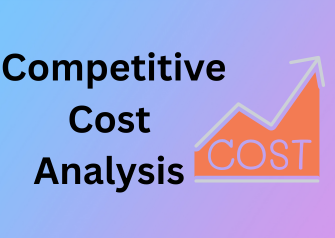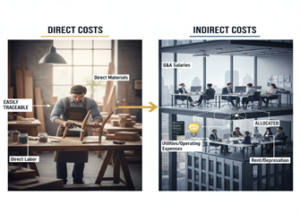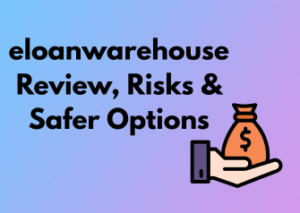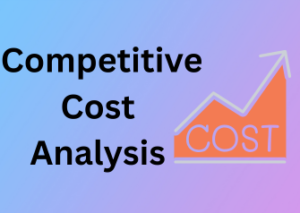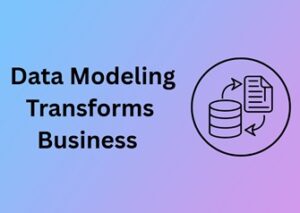When it comes to staying ahead in any business, understanding the true cost landscape of your industry is a crucial first step. But let’s be real, cost analysis can sometimes feel like navigating a dense forest without a map. Lucky for you, we’re here to chart a friendly and straightforward path through this tricky terrain!
Let’s start with some clarity: costs in your industry don’t exist in a vacuum. They’re influenced by a mix of external factors (like market trends and supply chain dynamics) and internal decisions (such as operational efficiency). But if you’re not looking at the full picture, you might miss critical nuances that determine whether you’re overspending or cutting corners. Let’s dive deeper into what this means.
Break Costs into Manageable Buckets
The true cost landscape begins to unfold when you break expenses into clear, digestible categories. Start by grouping costs under broad umbrellas like:
- Material Costs: Are you paying too much for raw materials or supplies, especially compared to your competitors?
- Labor Costs: This includes wages, benefits, and taxes tied to your workforce. Are these justifiable for your region and industry norms?
- Overhead Costs: Think rent, utilities, software, and maintenance. Could your operational expenses use a refresh?
Analyze these categories with an honest eye. They give you a foundational understanding of where the money flows and where potential leaks may be lurking.
Benchmarking is Your Competitive Advantage
Once you’ve mapped your costs, it’s time to take a step back and compare your numbers to industry benchmarks. Why does this matter? Without context, an isolated cost might seem either devastating or negligible. But with benchmarks in place, you’ll see whether you’re operating efficiently or if competitors are outpacing you.
Pro Tip: Look at publicly available data or reputable industry studies to gauge averages for material pricing, production expenses, or even marketing spends. This way, you’ll know whether you’re in line or need a sharper focus on spending.
Don’t Underestimate External Factors
The cost landscape is rarely static, it’s impacted by dynamic market forces like fluctuating raw material prices, shifting consumer demands, and innovations in technology. For example:
- If commodity prices spike, you’ll likely see it ripple through your material costs (hello, inflation!).
- Advancements in automation might mean you need to invest upfront while saving on labor long-term.
Keep a finger on the pulse of the wider industry ecosystem. Subscription services, trade publications, and even networking at industry events can help you stay updated on these elements.
The Importance of Regular Cost Reviews
Here’s a little secret: The true cost landscape is never truly static. Reviewing your costs shouldn’t become a once-a-year ordeal, it should be part of your ongoing strategy. Schedule routine check-ins, quarterly or semi-annually, to revisit your expense structure in light of changing circumstances.
Empower Your Team to Contribute
Sometimes, the people closest to your operations see cost inefficiencies more clearly than anyone else. Create a workplace culture where employees feel empowered to suggest process improvements and cost-saving opportunities. Together, your team can become a united front against unnecessary expenses.
In summary, untangling the true cost landscape is a mix of diligent analysis, savvy benchmarking, and a proactive approach. It’s not a one-and-done process, but an ongoing journey that ensures your business stays competitive and profitable. Start small, stay curious, and keep asking questions. After all, clarity in costs paves the way for smarter decisions!
Identifying Key Cost Drivers: Beyond the Obvious
When it comes to understanding the financial nuts and bolts of your business, it’s easy to focus on the big-ticket expenses , materials, labor, rent, and utilities. But what if I told you that some of the real culprits behind escalating costs are sneakier, often hiding in plain sight? That’s why spotting and understanding your key cost drivers is a game-changer for staying competitive. Let’s dive into the less obvious influences that might be quietly chewing through your bottom line.
Look Beyond Material Costs
Sure, raw materials are often front and center when analyzing costs. But ask yourself this: Are there inefficiencies or waste during production, storage, or transportation? For example:
- Are your suppliers charging hidden fees like rush delivery, restocking costs, or minimum order penalties?
- Is your inventory piling up due to inaccurate demand forecasting?
- Could a small adjustment in packaging design cut down on shipping dimensions or weight?
By investigating these under-the-radar factors, you can identify smarter, streamlined solutions, often without compromising quality.
The Cost of Time is Often Overlooked
Time is money , a saying as old as business itself, yet many companies underestimate the cost of inefficiency. Here are a few areas where time might be slipping through the cracks:
- Bottlenecks: Are there repetitive delays in production, approvals, or customer service? Every delay could be costing you dollars.
- Employee productivity: Are outdated tools or processes slowing down your workforce? Consider investing in automation or better training.
- Customer churn: Is your team spending excessive time chasing leads or dealing with complaints? That’s time better spent on retaining existing customers.
Evaluating how your team and systems utilize time can uncover areas ripe for improvement , often leading to reduced costs without cutting corners.
Tech and Infrastructure Costs: Are They Working For You or Against You?
Technology and infrastructure are so integral that they can feel like set it and forget it aspects of your business. But ignoring how they impact your costs is a mistake! Consider:
- Software subscriptions: Are you paying for licenses that your team hardly uses or bloated apps that could be replaced with more affordable, focused software?
- Energy costs: Could upgrading to energy-efficient equipment reduce utility bills and long-term operating costs?
- Outdated infrastructure: Is your reliance on legacy systems slowing processes down or requiring costly maintenance?
Regular audits of your tech stack and infrastructure can pave the way for smarter investments that yield exponential savings over time.
The Invisible External Factors
Sometimes, key cost drivers don’t even originate in-house. External forces could be quietly influencing your bottom line. For example:
- Fluctuations in exchange rates or tariffs if your materials come from abroad.
- Rising shipping or fuel costs impacting logistics.
- Changes in market demand pushing up the costs of specific components or labor.
Stay tuned into external trends. Networking with other industry leaders or consulting market reports can help you anticipate and mitigate these shifting costs.
Analyzing Direct vs Indirect Costs: What Really Impacts Profitability
When it comes to understanding your business’s profitability, there’s no way around it: you’ve got to dig into your costs. But here’s where things get interesting—direct and indirect costs behave differently, and not understanding their nuances could leave you scratching your head over your profit margins. Let’s break it down and uncover how these two types of costs influence your bottom line.
What Are Direct and Indirect Costs?
First things first. Direct costs are those that are easy to trace back to the creation of your product or service. Think of materials, labor, or even the packaging you use to ship your products. If you’re a bakery, your flour, sugar, eggs, and the wages for your bakers fall under direct costs.
Meanwhile, indirect costs are the subtle expenses lurking in the background of your business operations. These don’t directly tie to a specific product or service but are essential to keeping things up and running. For instance, the electricity keeping your ovens running or the salary of your office admin are indirect costs.
Why Does This Matter?
Here’s the deal, focusing solely on direct costs might give you a partial picture of your expenses. Sometimes, indirect costs have an outsized impact on profitability because they quietly add up over time. Striking the right balance is essential to understanding your true cost structure.
How Direct Costs Shape Pricing and Profitability
Direct costs have a clear connection to your profit margins. The more you can control these, the better. For example:
- Negotiating with suppliers for bulk discounts on materials.
- Streamlining production processes to reduce waste and labor time.
- Investing in scalable tools or systems that lower per-unit production costs.
Managing direct costs effectively gives you the wiggle room to price competitively without slashing into your margins. That’s why businesses typically target these first when analyzing expenses.
The Silent Role of Indirect Costs
Indirect costs, on the other hand, are sneaky. Because they’re not tied to a specific product or service, they’re easier to overlook. But those small expenses—things like rent, software subscriptions, or employee benefits, can snowball into major costs.
Want a real-world example? A small retail shop may assume the rent is a fixed expense. However, moving to a more affordable location or negotiating lower lease terms could significantly reduce indirect costs and have a long-term positive impact on profitability.
Balancing Direct and Indirect Costs
Here’s where it gets fun: you don’t have to choose between optimizing direct or indirect costs. In fact, an intelligent cost analysis should include both! Here’s how to approach it:
- Understand your cost structure: Use accounting software or tools to categorize and analyze your costs. Learn what percentage of your expenses are direct vs indirect.
- Focus on ROI: Evaluate which costs, direct or indirect, provide the most return. For example, investing in employee training (an indirect cost) could improve productivity, reducing direct labor costs overall.
- Monitor regularly: Cost structures change over time. Keep tabs on recurring expenses and look for areas to improve efficiency while maintaining quality.
Tools and Techniques to Simplify Cost Analysis
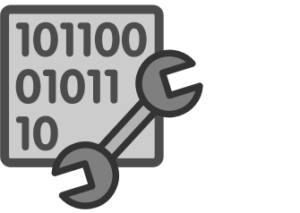
Let’s face it, cost analysis can seem like one of those tedious, never-ending tasks. But the good news? It doesn’t have to be that way. Thanks to modern tools and streamlined techniques, analyzing costs can become a manageable, even insightful part of your workflow. Let’s dive into some practical ways to simplify cost analysis while staying laser-focused on what matters most: results.
Why Simplifying Cost Analysis Matters
Before we dig into tools, let’s unpack why simplifying this process is so critical. The simpler and faster your cost analysis is, the more time you’ll have to focus on strategies to grow your business. Complicated calculations and outdated techniques don’t just waste time; they can lead to oversights that impact profitability. The goal is clarity, speed, and actionable insights. But how do you get there? That’s where the right tools and methods step in.
Leverage Automation for Repeated Tasks
Gone are the days of poring over endless spreadsheets manually. Automation is here to save the day! Tools like Excel macros, cloud-based software like QuickBooks, or all-in-one systems like NetSuite can reduce the time you spend on repetitive processes. For example, rather than recalculating your cost of goods sold (COGS) every month, you can set up a system that updates those figures automatically. The result? A lot fewer headaches and more room for strategic thinking.
Get Visual with Dashboards
Numbers on a spreadsheet are useful, but let’s be honest—they can also be overwhelming. Visual management tools like dashboards can make cost data more accessible and insightful. Platforms like Power BI, Tableau, or even Google Data Studio allow you to transform rows of data into colorful, intuitive charts and graphs.
Benefits of Visualization:
- You can quickly identify cost spikes or patterns.
- Dashboards help you communicate findings more effectively with teams and stakeholders.
- They focus everyone on the big picture, not just tiny details.
Break Down Costs into Bite-Sized Categories
By organizing your costs into smaller, digestible categories, analysis becomes far less overwhelming. For example, instead of looking at overall expenses, break it down into easier-to-track sections like labor, materials, and overhead. Specialized tools like FreshBooks help with such categorization and even assign costs to specific projects, making tracking much simpler.
Use Benchmarking to Add Context
Numbers on their own can be deceptively simplistic. A key technique in cost analysis is adding context by comparing your numbers against industry benchmarks. Research reports, government statistics, and even custom benchmarking tools can help you measure your performance against competitors or industry standards.
Why is this important?
If your shipping costs are higher than the industry average, for example, that’s a red flag worth investigating, and an opportunity to strategize smarter solutions.
Don’t Underestimate Collaborative Tools
Sometimes, simplifying doesn’t mean going it alone. Collaborative tools like Trello, Asana, or Slack can bring key players into the process, making it easier to gather data across departments. Input from multiple perspectives can often reveal hidden costs or overlooked efficiencies, so stay open and use the tools your team is comfortable with.
Comparative Insights: How Your Rivals Keep Costs Under Control
Ever wondered how your competitors consistently manage to keep their costs tight without sacrificing quality? It’s not sorcery, it’s strategy! Let’s dive into some friendly, down-to-earth insights on how businesses across industries smartly control expenses while staying competitive. From tried-and-true practices to clever tactics, understanding your rivals’ cost-control measures can reveal plenty of actionable takeaways.
They Prioritize Efficiency at Every Level
Your competitors likely have laser-sharp focus when it comes to improving efficiency, and it’s not just about production. They look into all areas of their operations, from supply chain logistics to marketing campaigns, with an eagle eye on areas to streamline. Consider this: Are there processes in your business that could be automated? Could negotiations with suppliers yield better bulk rates? Efficiency isn’t glamorous, but boy, does it pay off!
Utilizing Economies of Scale
One secret weapon many bigger players use is economies of scale. Basically, the bigger they get, the lower their per-unit costs become. This happens because they’re able to buy raw materials in bulk, negotiate better shipping rates, or invest in specialized technology that smaller competitors often can’t justify. Are you in a position to scale up so you can benefit from similar cost advantages? Collaborating with industry peers for joint purchasing agreements could also be an option worth exploring.
Precision in Variable Cost Management
Many successful competitors track their variable costs like hawks. These costs—like raw materials, packaging, or commissions, can fluctuate based on production or sales. They may create exact plans to ensure spending ties closely to revenue. For instance, ever noticed some brands limiting seasonal promotions or producing limited edition runs? That’s often strategic; they’re controlling costs without overcommitting resources. Take a peek at your variable costs, are there areas you could align spending better with actual performance?
Strategic Outsourcing and Partnerships
Sometimes, your rivals reduce costs by outsourcing certain activities to specialists or forming partnerships with vendors who can deliver top-notch results without the heavy fixed costs of doing it all in-house. Whether it’s hiring freelance designers rather than maintaining a full creative team or outsourcing customer support operations, these choices can free up internal resources (and budgets). The key is outsourcing strategically, cutting costs without cutting control over quality.
Robust Data-Driven Decisions
Smart businesses lean heavily on data analytics to inform their cost-related choices. They monitor real-time spending, identify outliers, and continuously refine their forecasts. This prevents unnecessary overspending and enables agility when costs in certain areas unexpectedly balloon. Tools like expense monitoring software or enterprise resource planning (ERP) systems are their go-to solutions. How solid is your data game? Investing in insights through technology might just be the game-changer you need!
Long-Term Thinking
Ever noticed how some companies resist the lure of short-term gains in favor of long-term success? Instead of cutting corners, competitors with sustainable models often invest in durable materials, train their teams thoroughly, and form lasting supplier relationships. Though these investments may cost more upfront, they reduce replacement, turnover, or repair expenses down the line. Playing the long game shows true discipline in cost management.
Strategies to Stay Cost Competitive Without Cutting Corners
Let’s face it, staying cost-competitive while maintaining quality is like walking a tightrope. Push too far toward aggressive cost-cutting, and you risk sacrificing what makes your business stand out. On the flip side, ignoring the need to stay lean might leave you trailing behind in a competitive marketplace. Don’t worry, we’re here to explore strategies that allow you to strike the perfect balance. So, grab your coffee and let’s dive into how to stay cost-competitive without cutting any corners!
Focus on Operational Efficiency
One of the smartest ways to reduce costs is to address inefficiencies in your operations. Ask yourself:
- Are there repetitive tasks that can be automated?
- Is your supply chain optimized to reduce unnecessary delays and expenses?
- Are resources being over-utilized or underutilized?
For example, incorporating technologies like cloud-based inventory management systems or automating routine administrative work can lead to significant savings. Remember, shaving off time and waste in operations allows you to pass on those savings without compromising quality.
Build Strong Relationships with Suppliers
Your suppliers aren’t just providers—they’re partners in your success. Building strong, mutually beneficial relationships opens doors to negotiating better terms like discounts for bulk orders or extended payment periods. Regularly communicate with your suppliers, understand their pricing structures, and keep an eye on their competitors. Who knows? A little negotiation might save you big bucks!
Innovate, Don’t Imitate
Cutting corners often comes from the pressure to keep up with competitors in terms of pricing. But here’s the thing, you don’t have to mimic their methods to stay in the game. Instead, channel your creativity and innovate. Can you simplify your production process? Offer a new bundle that increases value for customers while managing costs? Or maybe find an eco-friendly alternative that reduces material expenses? Being adaptive and forward-thinking keeps you lean and competitive.
Leverage Employee Expertise
Your team is a goldmine of ideas. Empower your employees to share cost-saving suggestions or process improvements. Create incentives for innovative thinking—it’s amazing how involving your staff can uncover inefficiencies or spark new ideas for better workflows. Not only does this help with costs, but it also boosts team morale since employees feel like valuable contributors.
Review, Monitor, Repeat
Let’s be honest, staying cost-competitive isn’t a “set it and forget it” situation. You’ve got to regularly review your cost structures and market trends. Use tools like data analytics to analyze performance and identify what’s working and what’s not. Conduct quarterly reviews, set benchmarks, and adapt quickly to market changes. Think of this as fine-tuning a well-oiled machine, ensuring everything is running as efficiently as possible.
Prioritize Value Over Price
Lastly, remember that customers don’t just buy based on price. They pay for value. Focus on what makes your business distinct, a stellar product or exceptional service. By keeping quality intact and streamlining your internal processes, you’ll carve out a space in the market where customers trust your value, even if your prices aren’t rock-bottom.
Staying cost-competitive isn’t a race to the bottom. It’s a thoughtful, strategic process. By blending smart operational adjustments with creativity and a customer-first mindset, you can stay ahead of the curve without compromising the very qualities that make you unique. So, step into the challenge confidently, you’ve got this!
Measuring the Real Impact of Competitive Pricing on Customer Behavior
Let’s face it, pricing is more than just a numbers game. It’s a direct signal to customers about the value, quality, and credibility of your product or service. But how can you measure the real impact of competitive pricing on customer behavior? Buckle up, because this is where psychology meets strategy, and it’s a fascinating journey!
Start with the Basics: What Does Competitive Pricing Mean?
Competitive pricing is about offering a price point that positions your product favorably in the market while staying attractive to your customers. It’s a delicate dance between undercutting your rivals and maintaining profitability. But here’s the kicker, pricing isn’t just about what you charge; it’s also deeply tied to how your customers perceive value.
The Customer Psychology Factor
Did you know that many customers use pricing as a shortcut to determine quality? For instance, pricing something low can sometimes lead people to think it’s “cheap” rather than a bargain. On the flip side, setting a high price might attract premium buyers but alienate cost-conscious shoppers.
To truly understand the impact, think about how customers make purchasing decisions:
- Price anchoring: Customers often compare your prices to those of competitors or even their own internal benchmarks.
- Perception of fairness: They want to feel like they’re getting a good deal. A slight discrepancy in price might be acceptable if the value you provide justifies it.
- Emotional triggers: Price can signal exclusivity or affordability, which can evoke emotional reactions and influence decisions.
Measure, Don’t Guess
To fully grasp how your pricing affects customer behavior, start gathering evidence. Here are a few ways to measure it:
- Analyze purchase patterns: Track sales volume before and after pricing adjustments. Did a minor price decrease lead to an uptick in sales? Did a higher price plateau your growth?
- Use feedback tools: Surveys, social media polls, and customer reviews can reveal how your audience perceives your pricing. For example, asking, “Do you feel our pricing offers good value?” can be eye-opening.
- Monitor churn rates: If you tweak your prices and suddenly see an exodus of loyal customers, that’s a clear signal something isn’t working.
Learn from Split Tests (A/B Testing)
One of the most effective ways to measure the impact of pricing is through experimentation. For example, in an e-commerce setting, you could offer two groups of customers slightly different prices for the same product and observe their behaviors. Watch for differences in:
- Conversion rates
- Average order value
- Repeat purchases
Carefully analyzing this data provides powerful insights into what customers are willing to pay and how pricing tweaks can affect their loyalty.
Watch Out for Long-Term Effects
One mistake businesses make is focusing solely on immediate sales. A low price might attract a surge of customers in the short term, but will they stick around? On the flip side, a higher price might initially deter some buyers but create a perception of premium quality, which could pay off later with brand loyalty.
It’s crucial to track metrics over time, including customer lifetime value (CLTV), retention rates, and brand reputation. Short-term success means very little if it compromises long-term growth.

